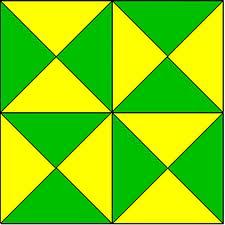Equilateral 4486
If we increase one side of the triangle by 11 cm and reduce the other by 11 cm, we get an equilateral triangle. Four times the shortest side of the triangle is 10 cm greater than three times the triangle's longest side. Find all the lengths of the sides of the triangle.
Final Answer:

Tips for related online calculators
Do you have a linear equation or system of equations and are looking for its solution? Or do you have a quadratic equation?
Calculation of an equilateral triangle.
See also our trigonometric triangle calculator.
Calculation of an equilateral triangle.
See also our trigonometric triangle calculator.
You need to know the following knowledge to solve this word math problem:
algebraplanimetricsbasic operations and conceptsGrade of the word problem
We encourage you to watch this tutorial video on this math problem: video1
Related math problems and questions:
- Triangles - combinations
 How many different triangles with sides in whole centimeters have a perimeter of 12 cm?
How many different triangles with sides in whole centimeters have a perimeter of 12 cm? - Equilateral 35073
 Draw an equilateral triangle ABC with a side of 8.5 cm. Assemble all the mines and measure them. What is the difference between the longest and the shortest of them?
Draw an equilateral triangle ABC with a side of 8.5 cm. Assemble all the mines and measure them. What is the difference between the longest and the shortest of them? - Dimensions 8044
 In the given rectangle, the length is 12 m greater than the width. We get a square if we reduce the length by 10 m and increase the width by 2 m. The area of the original rectangle is 300 m² more than the area of the square. Determine the dimensions of th
In the given rectangle, the length is 12 m greater than the width. We get a square if we reduce the length by 10 m and increase the width by 2 m. The area of the original rectangle is 300 m² more than the area of the square. Determine the dimensions of th - Rectangle's dimensions
 The rectangle has an area of 147 cm². One of its sides is three times longer than the other side. We increase the shorter side of the rectangle by 8 cm. By how many cm² will the new rectangle's area be larger than the original rectangle?
The rectangle has an area of 147 cm². One of its sides is three times longer than the other side. We increase the shorter side of the rectangle by 8 cm. By how many cm² will the new rectangle's area be larger than the original rectangle? - N points on the side
 An equilateral triangle A, B, and C on each of its inner sides lies N=13 points. Find the number of all triangles whose vertices lie at given points on different sides.
An equilateral triangle A, B, and C on each of its inner sides lies N=13 points. Find the number of all triangles whose vertices lie at given points on different sides. - Circumference 42471
 The lengths of the sides of the triangle ABC are in the ratio 4:2:5. Calculate the size of the longest side of a similar KLM triangle, whose circumference is 66 cm.
The lengths of the sides of the triangle ABC are in the ratio 4:2:5. Calculate the size of the longest side of a similar KLM triangle, whose circumference is 66 cm. - The rectangle
 The rectangle has one side 8 cm smaller than the type. If you reduce the length by 6 cm and increase the width by 2 cm, you will get a square whose area is 400 cm². What are the original dimensions of the rectangle?
The rectangle has one side 8 cm smaller than the type. If you reduce the length by 6 cm and increase the width by 2 cm, you will get a square whose area is 400 cm². What are the original dimensions of the rectangle?
